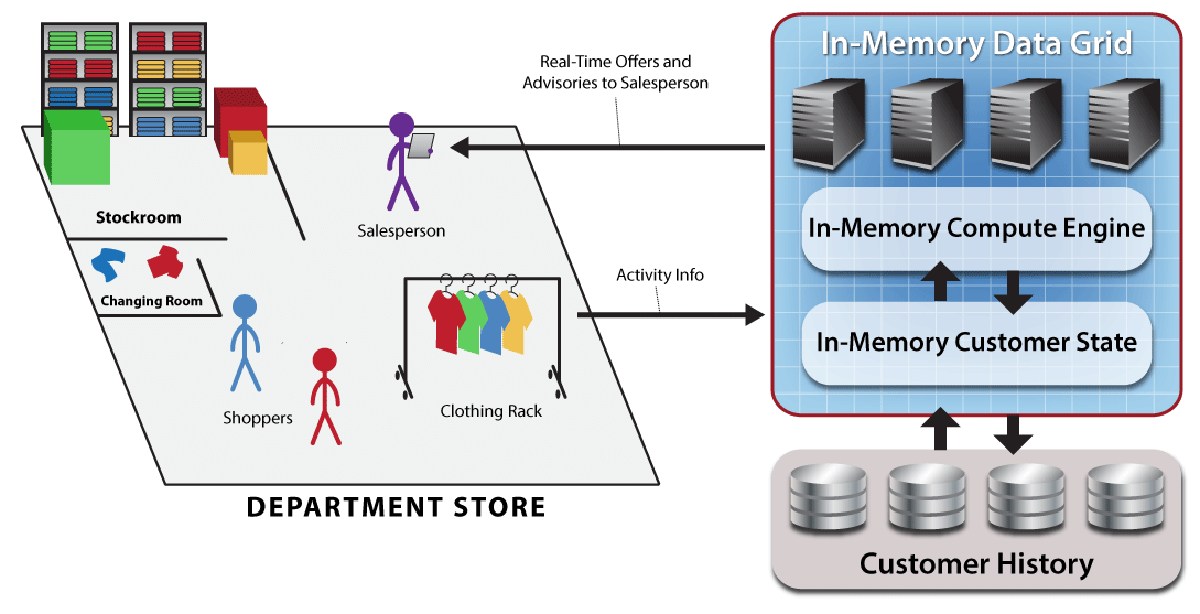Operational Intelligence in Action: A Scenario
Operational intelligence enables impressive new capabilities for brick-and-mortar retailers. Here’s a sample scenario that demonstrates how it enhances the in-store shopping experience. It starts with the retailer offering an opt-in mobile app to its customers which signals to a back-office system when they arrive at the store. By analyzing each customer’s preferred brands and sizes based on their buying history, this system (described below) uses operational intelligence to send timely, targeted recommendations to the sales staff at the point of sale. This empowers the staff to provide a highly personalized shopping experience. In addition, RFID tags enable the system to track the location of products throughout the store so that sales staff can immediately retrieve needed merchandise from the stockroom.
This use of operational intelligence integrated with mobile and RFID technologies gives brick-and-mortar retailers a powerful new tool for personalizing the in-store shopping experience in a manner that cannot be matched by online shopping. It also enables them to minimize inventory costs with precise tracking similar to that used by large, e-commerce companies.

